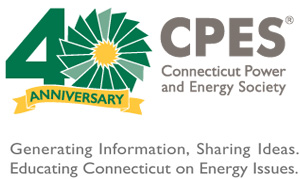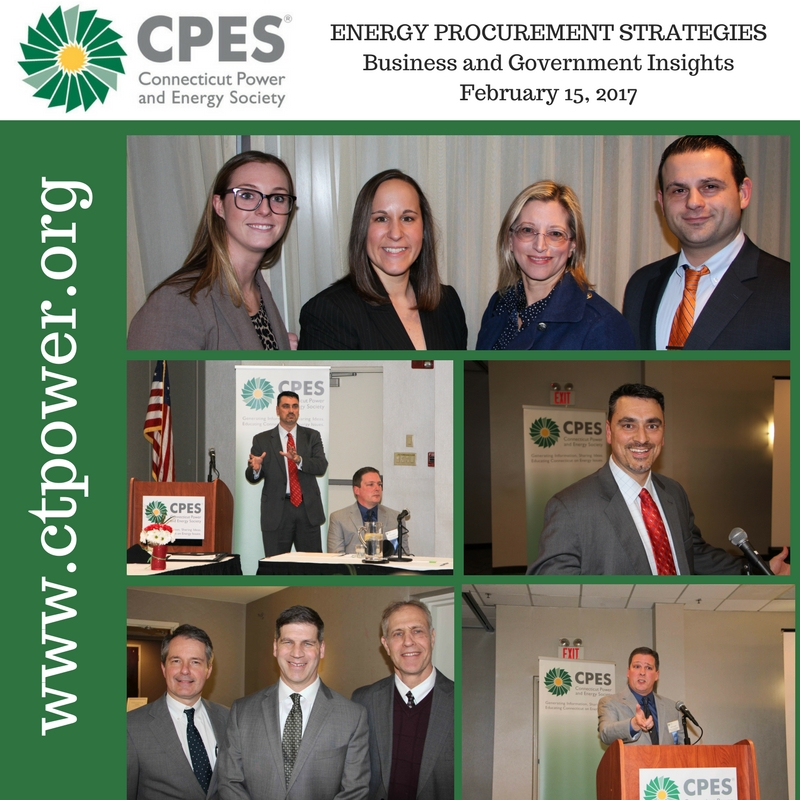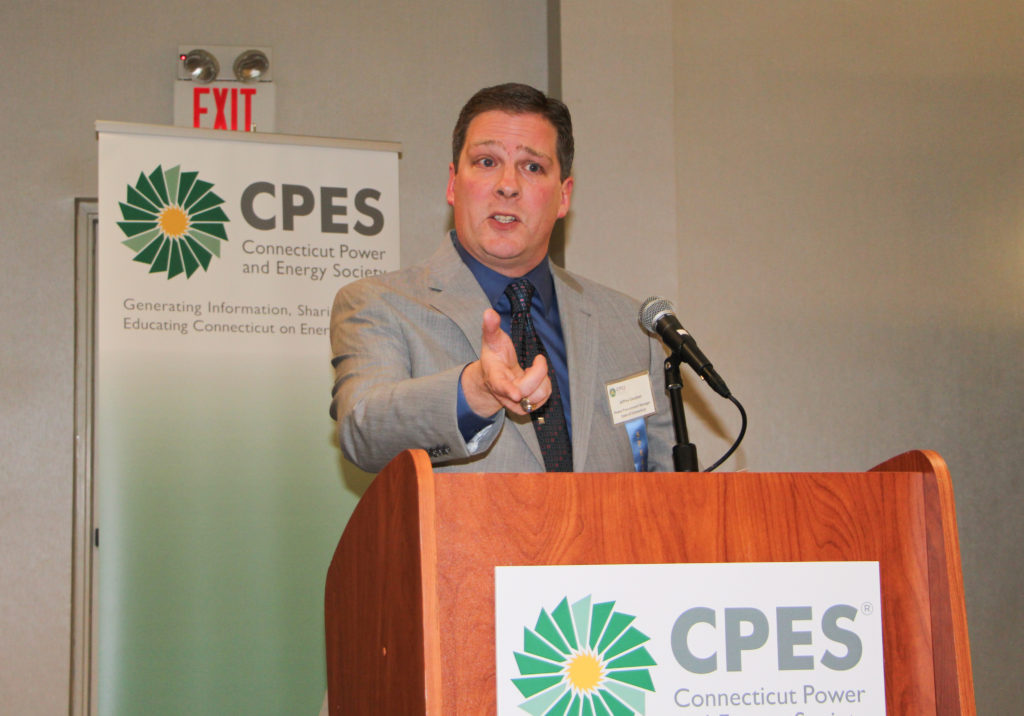This update features policy, regulatory, legislative, and regional developments in Connecticut and New England. The policy updates are compiled by the CPES New Energy Professionals Team. If you are interested in learning more about the New Energy Professionals, the Policy Committee, or if you have ideas for future policy updates, we would welcome your input and feedback. Please send comments to Kathryn Dube, CPES Executive Director, via email: kdube@ctpower.org.
This week’s feature:
- ISO New England Publishes 2017 Forecast Report of Capacity, Energy, Loads, and Transmission (CELT)
REGIONAL AND INDUSTRY DEVELOPMENTS
ISO New England Publishes 2017 Forecast Report of Capacity, Energy, Loads, and Transmission (CELT)
On May 1, 2017, ISO New England published the 2017 Forecast Report of Capacity, Energy, Loads, and Transmission (CELT), a primary source for assumptions used in ISO system planning and reliability studies. The report provides a snapshot of the New England power system, including:
- The number of megawatts (MW) with capacity supply obligations resulting from the 11 Forward Capacity Market (FCM) auctions held to date, as well as the total generating capability of resources in the region
- The breakdown of the region’s generators by fuel type
- A link to the listing of transmission projects proposed, planned, and under construction
- The long-term forecast for growth in energy consumption and peak demand, including the contributions of energy efficiency and behind-the-meter solar facilities
The long-term forecast for electricity use is developed each year using state and regional economic forecasts, 40 years of weather history in New England, results of both the ISO’s energy-efficiency (EE) forecast and solar photovoltaic (PV) forecast, and other factors. The ISO calculates a gross forecast and then applies the EE and PV forecasts to develop a net forecast.
The 2017 CELT projects that energy usage will decline slightly in New England and peak demand will remain flat over the 10-year period. The primary factors are continuing robust installation of energy-efficiency measures and behind-the-meter solar arrays throughout the region, as well as a slightly lower forecast for economic growth in New England.
For more information, visit the ISO Newswire.
CONNECTICUT LEGISLATIVE UPDATE:
Information about the Energy and Technology Committee, including committee meetings and public hearings, is available at: https://www.cga.ct.gov/et/
The Energy and Technology Committee’s JF deadline was March 23, 2017. The list of bills reported out of the Energy and Technology Committee is available at: https://www.cga.ct.gov/asp/menu/CommJFList.asp?comm_code=et and additional information about the status of these bills is available at: https://www.cga.ct.gov/2017/etdata/cbr/et.asp
CPES does not take a position on these legislative proposals; this is provided for informational purposes only to CPES members.


 Jeffrey Gaudiosi opened the discussion with a look back at how energy was procured in the state of Connecticut after the electricity market deregulated in 1998. Deregulation allowed retail customers to choose a competitive supplier of electricity, but required the state’s electric distribution companies to continue to provide “Standard Service” and “Supplier of Last Resort Service” to customers who did not choose a competitive supplier. He explained that the legislature dictated how electricity was procured for these customers, requiring the utilities to employ a three-year laddering model for Standard Service power procurements. This procurement method involved a series of overlapping wholesale contracts extending over several years, which kept retail electricity prices relatively stable for consumers. This method worked well for many years, Gaudiosi explained, but fell out of favor when Standard Service rates reached record levels and prevented retail customers from taking advantage of declining wholesale electricity prices in the 2009-2010 timeframe.
Jeffrey Gaudiosi opened the discussion with a look back at how energy was procured in the state of Connecticut after the electricity market deregulated in 1998. Deregulation allowed retail customers to choose a competitive supplier of electricity, but required the state’s electric distribution companies to continue to provide “Standard Service” and “Supplier of Last Resort Service” to customers who did not choose a competitive supplier. He explained that the legislature dictated how electricity was procured for these customers, requiring the utilities to employ a three-year laddering model for Standard Service power procurements. This procurement method involved a series of overlapping wholesale contracts extending over several years, which kept retail electricity prices relatively stable for consumers. This method worked well for many years, Gaudiosi explained, but fell out of favor when Standard Service rates reached record levels and prevented retail customers from taking advantage of declining wholesale electricity prices in the 2009-2010 timeframe. David Ferro rounded out the discussion with a look at how consultants and brokers are changing their power procurement strategies based on what is happening in the marketplace. He highlighted natural gas storage volumes as one of the primary drivers of wholesale electricity prices in the U.S. In New England, he pointed to increasing capacity and transmission costs impacting wholesale electricity prices, and discussed the significant turnover in the generation fleet away from coal- and oil-fired generation toward natural-gas fired generation. This, he said, will put additional pressure on the natural gas infrastructure serving the region, which can have a significant impact on wholesale electricity prices. He concluded with a list of seven steps for developing an energy supply strategy – for facility managers, supply chain professionals, and those involved in managing energy procurement strategies. Technology advancements, he said, will be extremely important in creating a “sustainable energy community” where consumers have more control over their energy supply.
David Ferro rounded out the discussion with a look at how consultants and brokers are changing their power procurement strategies based on what is happening in the marketplace. He highlighted natural gas storage volumes as one of the primary drivers of wholesale electricity prices in the U.S. In New England, he pointed to increasing capacity and transmission costs impacting wholesale electricity prices, and discussed the significant turnover in the generation fleet away from coal- and oil-fired generation toward natural-gas fired generation. This, he said, will put additional pressure on the natural gas infrastructure serving the region, which can have a significant impact on wholesale electricity prices. He concluded with a list of seven steps for developing an energy supply strategy – for facility managers, supply chain professionals, and those involved in managing energy procurement strategies. Technology advancements, he said, will be extremely important in creating a “sustainable energy community” where consumers have more control over their energy supply. 

